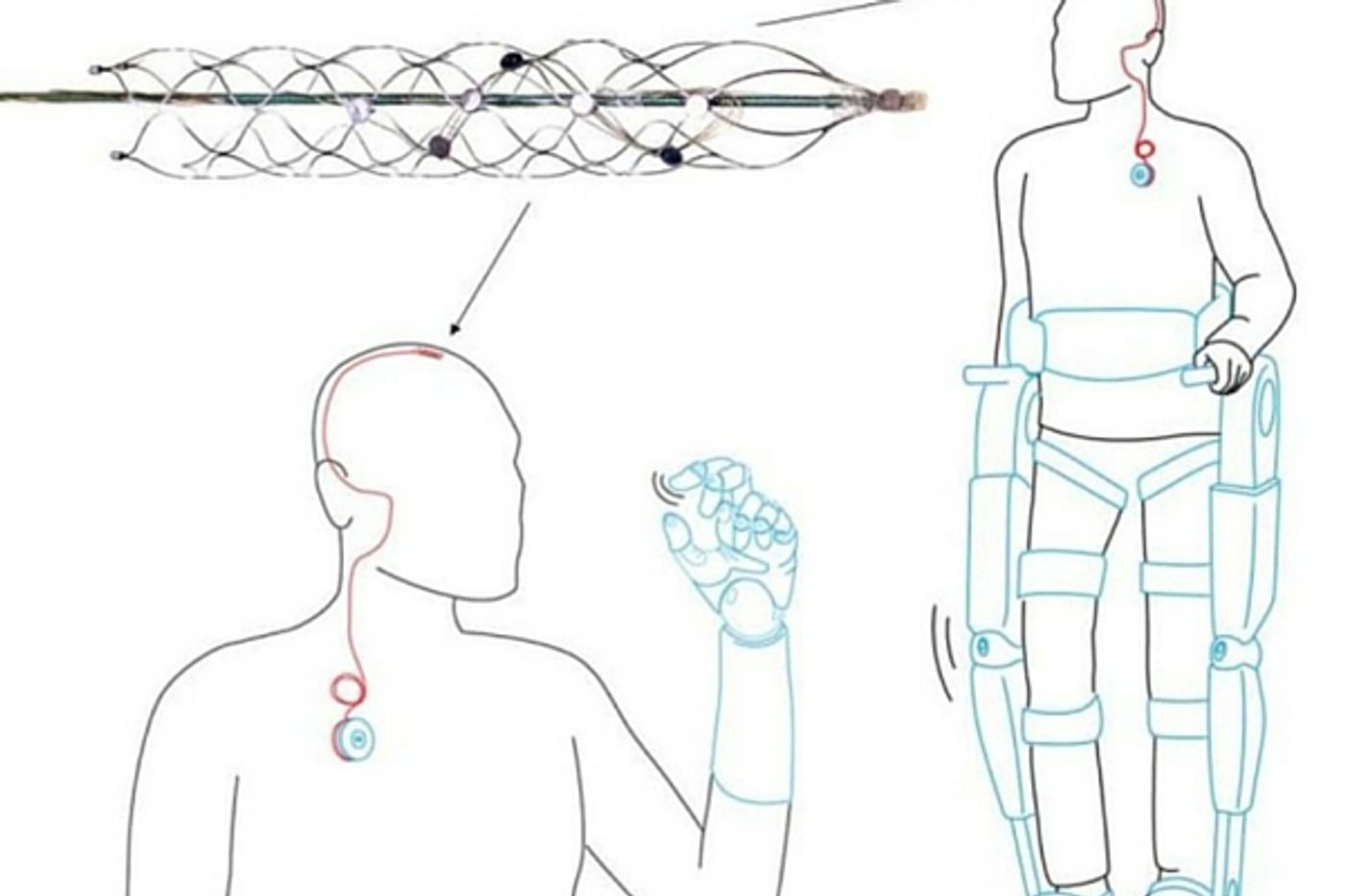Normally when there is talk of a small piece of metal that can be implanted in the brain to take over the control of some of the brain functions, it’s fictional. Maybe the preview for a video game or a cheesy sci-fi movie. However, in Australia the talk of just such a device is the latest medical news.
It’s called a stentrode. It’s about the size of a bobby pin and its job is to record brain activity and covert the signals from the neuron in the brain into electrical commands. It sits inside a blood vessel that is near to the brain and collects the neuron signals. The goal is to allow these electrical commands to control certain functions for patients with bionic limbs or to propel a wheelchair.
At the Royal Melbourne Hospital, a research team of neuroscientists is assembling a small group of patients who have suffered spinal cord injuries to further test the device. Early test results that the team collected were published in the journal
Nature Biotechnology and show that the device can pick up and record signals in high quality sound. The device is minimally invasive because it can be installed into a blood vessel via angiography rather than have the patient undergo a risky and complex craniotomy.
Other implanted brain devices are often placed directly into brain tissue. Even with the thinnest materials and expert technology in guiding them, damage to surrounding tissue is unavoidable. This damage can then affect the results of any studies, making research less accurate and reproducible.
In a press release from the University of Melbourne principal study author and Neurologist at The Royal Melbourne Hospital and Research Fellow at The Florey Institute of Neurosciences and the University of Melbourne, Dr Thomas Oxley called it “revolutionary.”
He said, “The development of the stentrode has brought together leaders in medical research from The Royal Melbourne Hospital, The University of Melbourne and the Florey Institute of Neuroscience and Mental Health. In total 39 academic scientists from 16 departments were involved in its development. We have been able to create the world’s only minimally invasive device that is implanted into a blood vessel in the brain via a simple day procedure, avoiding the need for high risk open brain surgery.”
The device, once implanted, will be used to allow spinal cord patients to use their own thoughts or brain activity to control an exoskeleton device to help them walk or to control other devices like wheelchairs. The team hopes that with more research and trials, the device can be used to help patients with other neurological diseases like Parkinson’s or epilepsy. The research was funded by US Defense Department, DARPA and Australia’s National Health and Medical Research Council with additional support from the Office of Naval Research Global, USA; The Australian Defence Health Foundation; The Brain Foundation and The Royal Melbourne Hospital Neuroscience Foundation. Check out the video below to learn more about this high-tech device and the team that is developing it.


















































